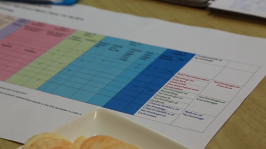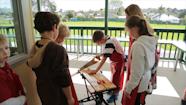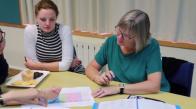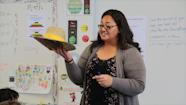Indicators of progression
We are preparing to close this site soon as this content has now moved to Tāhūrangi.
Tāhūrangi is the new online curriculum hub for Te Tāhuhu o te Mātauranga | Ministry of Education.

The indicators of progression define the learning objectives at each level of the curriculum. They describe the knowledge, skills, and understandings students should be demonstrating when achieving at the specified level.
are provided for:
- each of the eight components within the technology curriculum (at levels 1–8)
- the learning objectives for the specialist areas of technology (at levels 6–8).
Indicators of progression: NZC components (levels 1–8) |
Indicators of progression: Specialist areas (levels 6–8) |
|---|---|
| Technological practice Outcome development and evaluation Technological knowledge Nature of technology Characteristics of technological outcomes Downloads Indicators of progression: Complete set by strand (PDF, 2 MB) Indicators of progression: Complete set by level (PDF, 318 KB) | Construction and mechanical technologies Design and visual communication Downloads Indicators of progressions: All specialist areas 2018 (PDF, 272 KB) Digital technologies update
The technology learning area has been revised to strengthen
The digital technologies learning objectives and indicators of
See Computational thinking: Progress outcomes and exemplars |
Learning progression diagrams
This series of learning progression diagrams presents indicators in schematic form for each component. You can see how the curriculum builds on earlier learning at every level.
The indicators and diagrams are useful for planning programmes, supporting formative and summative evaluations, and supporting reporting.
Using the indicators of progression
Teachers can use the indicators as a guide. The indicators must be interpreted within the context of the focus if you are using them with students. The indicators can then serve as learning outcomes and provide a solid basis for planning, teaching, and assessing.
Teacher guidance: Provide, guide, and support
A teacher guide accompanies each set of indicators. Content in the guide suggests appropriate ways teachers can support student learning.
The deliberate use of provide, guide, and support in the teacher guidance sections signals that as students' capacity for self-management increases, teachers can progressively reduce the level of scaffolding provided.
- Provide – the teacher is responsible for introducing and explicitly teaching new knowledge, skills, or practices.
- Guide – the students have a level of understanding and competency on which they can draw, and the teacher remains primarily responsible for continuing to develop these.
- Support – the students take primary responsibility for their own learning as they draw on all their previous experiences and extend their understanding. The teacher is supportive rather than directive.
Indicators for the specialist areas of technology
In the senior school years, teachers can use learning objectives for the specialist areas in conjunction with NZC achievement objectives or instead of them. Teachers are encouraged to use both.
Related videos
Programmes to ensure a broad technological literacy (04:01)
Carol Rimmer outlines the programme planning she uses to provide students with broad knowledge.
Using the indicators of progression in a secondary school (03:44)
Carol Rimmer explains how indicators of progression are woven into programmes of learning.
Planning for technology at primary (03:59)
Jude Black and Diana Comp describe their approach to planning at Green Bay Primary.
Reviewing programme planning in years 7–13 (03:23)
At Diocesan School planning focuses on technology components for years 7–10, and establishing scholarship potential in year 13....
Growing teacher knowledge of the technology learning area in primary (03:41)
Jude Black and Moira Patterson describe the technology-focused professional learning at Green Bay Primary.





